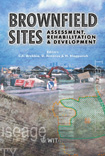Proper Risk Management: The Key To Successful Brownfield Development
Price
Free (open access)
Transaction
Volume
55
Pages
Published
2002
Size
577 kb
Paper DOI
10.2495/BF020291
Copyright
WIT Press
Author(s)
R. D. Espinoza & L. Luccioni
Abstract
Society benefits from the redevelopment of environmentally impaired properties, often referred to as brownfields. For most investors and developers, brownfield redevelopment projects are considered too risky and demand higher returns on the investment needed to cleanup and redevelop a contaminated property. This paper proposes a framework for hedging the risks associated with brownfield development and shows how the use of hedging mechanisms can positively affect the value of a brownfield investment opportunity, thus increasing the likelihood that the project will provide an attractive return on investment. 1 Introduction Several incentives have been recently proposed and implemented to promote the development of brownfields (i.e., abandoned, idled, or underutilized environmentally impaired properties). These incentives consist of: (i) federal and state environmental regulations incentives (i.e., limitations on investors or developers liabilities); (ii) economic incentives (e.g., tax breaks, municipal and/or federal grants); and (iii) administrative incentives (e.g., faster review process of construction permit applications for brownfield projects). Despite these incentives, investors and developers often find the development of greenfields (i.e., uncontaminated virgin land) more attractive than the development of brownfields. Investors and developers tend to identify the real or perceived risk related to environmental conditions as the main barrier to investing in brownfield development. Also, investors and developers require a considerably higher rate of return for brownfield redevelopment projects than for other real estate projects due to these environmental risks. There are, indeed, several sources of risk associated with brownfield development. Environmental risks include the cost of remediation and third- party liability. Still, as with any other real estate development, the risks of property value change and time required to realize the investment (i.e., clean-up
Keywords




